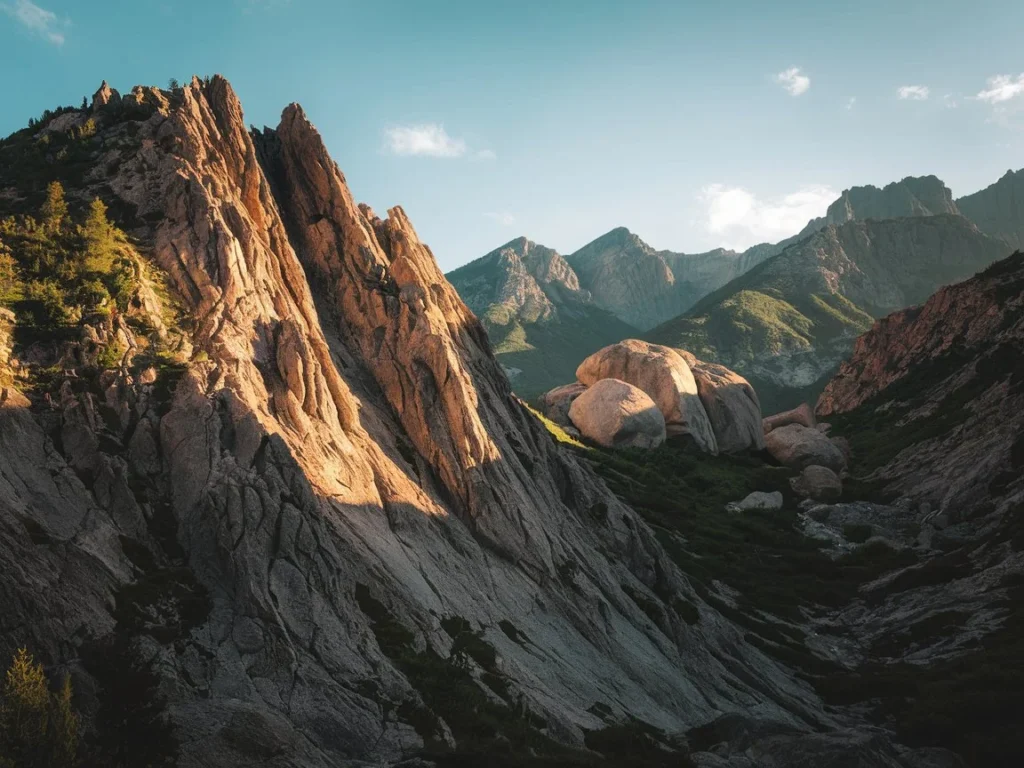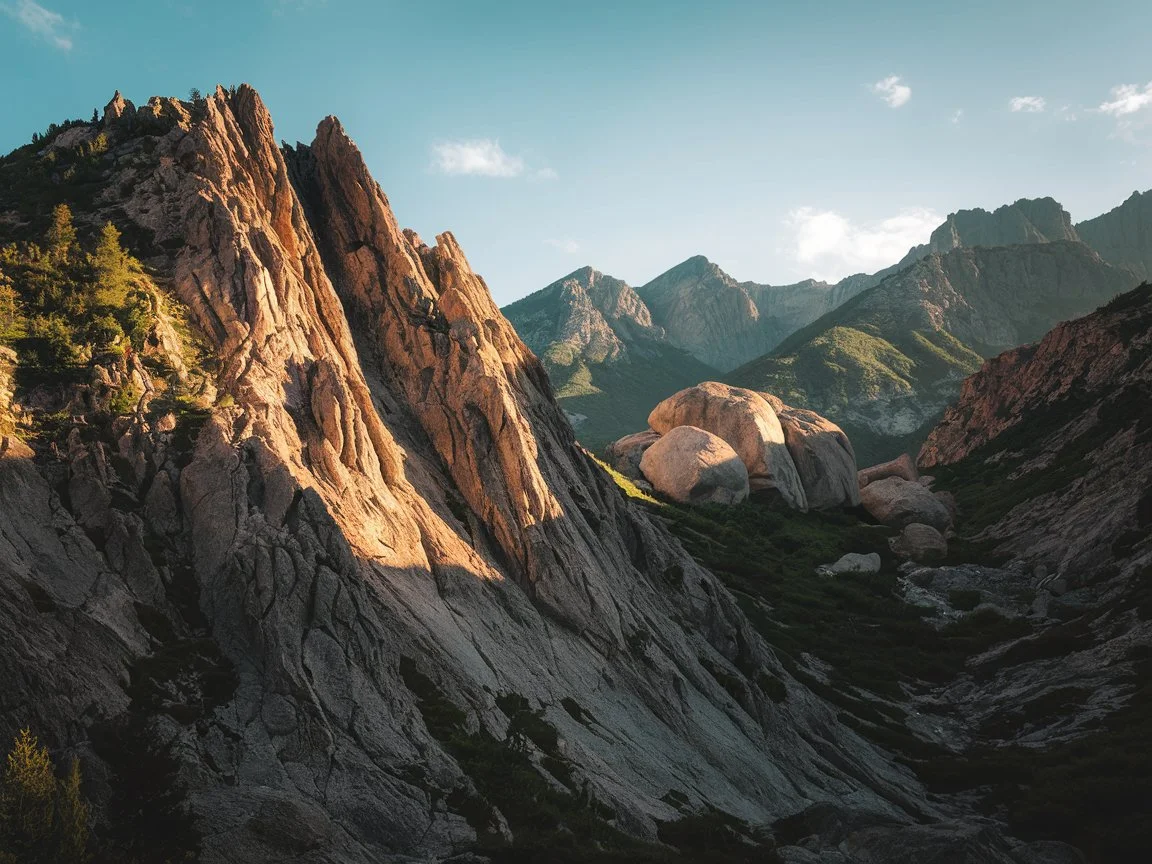
Introduction
Rock climbing and bouldering are two of the most exhilarating ways to experience the rugged beauty of mountain environments. These activities challenge your physical strength, mental focus, and problem-solving skills while offering breathtaking views and a deep connection to nature. Whether you’re scaling a towering cliff or tackling a short but intense boulder problem, climbing provides a unique sense of accomplishment and adventure.
While rock climbing typically involves ropes, harnesses, and safety gear to ascend longer routes, bouldering focuses on shorter climbs without ropes, relying on crash pads and spotters for safety. Both activities cater to different preferences and skill levels, making them accessible to beginners and experts alike. This guide will explore the types of climbing, essential gear, techniques, safety tips, and the best mountain destinations to help you get started or take your skills to the next level.
1. Types of Rock Climbing and Bouldering
Understanding the different types of climbing will help you choose the style that suits your interests and abilities.
- Traditional Climbing (Trad): Trad climbing involves placing removable protection (like cams and nuts) into cracks and crevices as you ascend. It requires strong route-finding skills and a deep understanding of gear placement. Trad climbing is ideal for those who enjoy problem-solving and adventure.
- Sport Climbing: Sport climbing uses pre-set bolts and fixed anchors for protection, making it safer and more accessible for beginners. Climbers focus on technique and endurance rather than gear placement, making it a great way to build confidence on the rock.
- Bouldering: Bouldering involves short, powerful climbs (usually under 20 feet) without ropes or harnesses. Crash pads and spotters provide safety. Bouldering is perfect for those who enjoy intense, dynamic movements and problem-solving.
- Free Soloing: Free soloing is the most extreme form of climbing, where climbers ascend without any safety gear. It’s reserved for highly experienced climbers and carries significant risks. This style is not recommended for beginners.
2. Best Mountain Destinations for Climbing and Bouldering
Here are three incredible destinations for rock climbing and bouldering:
- Destination 1: Yosemite National Park, California
- Difficulty Level: Intermediate to Advanced
- Key Features: Iconic granite walls like El Capitan and Half Dome, world-class trad and sport climbing routes, and stunning valley views.
- Destination 2: Rocky Mountain National Park, Colorado
- Difficulty Level: Beginner to Advanced
- Key Features: Diverse climbing options, from alpine routes to bouldering areas like Chaos Canyon. The park offers breathtaking scenery and a variety of challenges.
- Destination 3: Fontainebleau, France
- Difficulty Level: Beginner to Advanced
- Key Features: Known as the bouldering capital of the world, Fontainebleau features thousands of problems on sandstone boulders set in a beautiful forest.
3. Essential Gear for Climbing and Bouldering
Having the right gear is crucial for safety and performance.
- Climbing Shoes & Chalk Bags: Climbing shoes provide grip and precision on the rock, while chalk bags keep your hands dry for better traction.
- Harnesses & Ropes: Harnesses and dynamic ropes are essential for sport and trad climbing. Ensure your harness fits well and your rope is appropriate for the type of climbing you’re doing.
- Crash Pads & Spotters: Crash pads protect boulderers from falls, and spotters help guide them onto the pad safely. These are must-haves for bouldering.
4. Techniques for Beginners and Intermediate Climbers
Mastering basic techniques will improve your climbing experience.
- Handholds & Footwork: Focus on using your legs to push rather than relying solely on your arms. Practice different types of handholds (crimps, jugs, slopers) to improve grip strength.
- Climbing Routes & Ratings: Learn the grading system for climbs (e.g., YDS for rock climbing, V-scale for bouldering) to choose routes that match your skill level.
- Mental Strategies: Overcoming fear is a big part of climbing. Practice deep breathing, visualization, and positive self-talk to build confidence.
5. Safety Tips for Climbing in the Mountains
Safety should always be a top priority.
- Weather Awareness: Avoid climbing on wet or unstable rock surfaces. Check the forecast and be prepared for sudden weather changes.
- Wildlife & Environmental Considerations: Respect local wildlife and follow Leave No Trace principles. Stay on designated trails and avoid disturbing natural habitats.
- First Aid & Emergency Preparedness: Carry a first-aid kit and know basic wilderness first aid. Have a plan for emergencies, including how to call for help in remote areas.
6. Joining the Climbing Community & Finding Partners
Climbing is a social activity that thrives on community.
- Benefits of Climbing with a Partner or Group: Climbing with others enhances safety, provides motivation, and makes the experience more enjoyable.
- Finding Local Climbing Clubs & Guided Tours: Join local climbing gyms or clubs to meet like-minded enthusiasts. Guided tours are a great way to learn from experienced climbers.
- Continuous Learning: Take classes, watch tutorials, and practice regularly to improve your skills.
Conclusion
Rock climbing and bouldering offer thrilling ways to explore mountain environments, challenge yourself, and connect with nature. Whether you’re a beginner or an experienced climber, there’s always a new route or problem to conquer. By understanding the different types of climbing, investing in the right gear, and prioritizing safety, you can enjoy these activities to the fullest. So grab your gear, find a partner, and start your climbing adventure today. Remember, the mountains are calling—will you answer?
For more you can check our Romantic Cabin Getaway for Couples: A Cozy Escape in the Mountains

